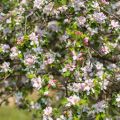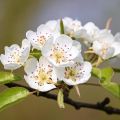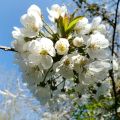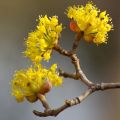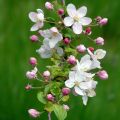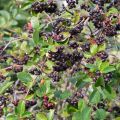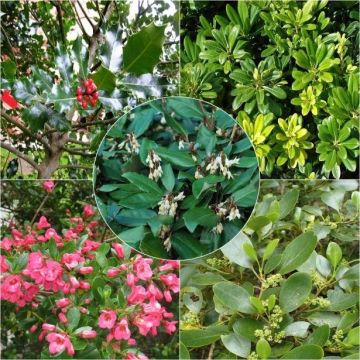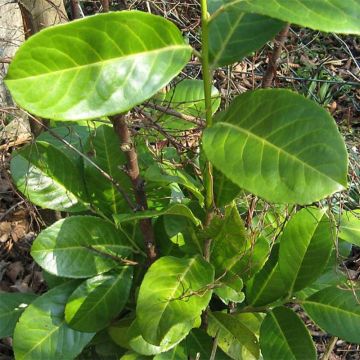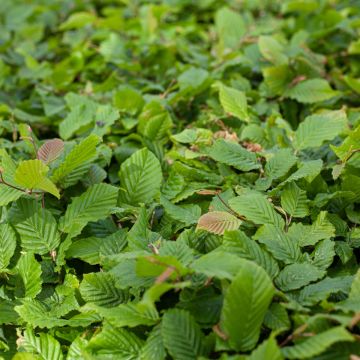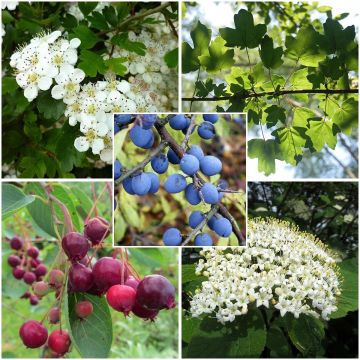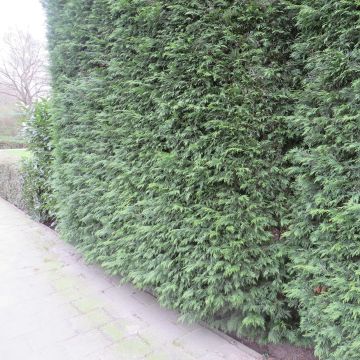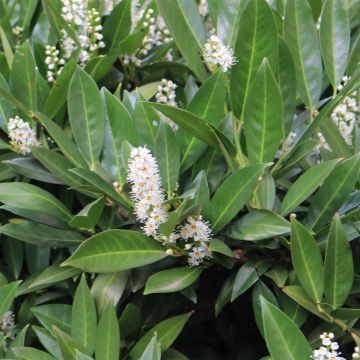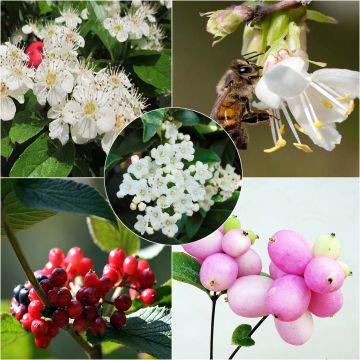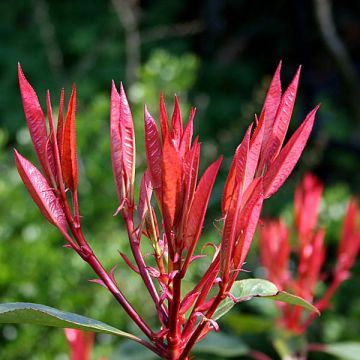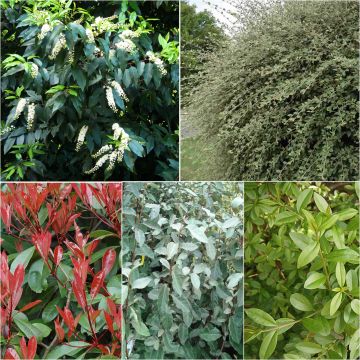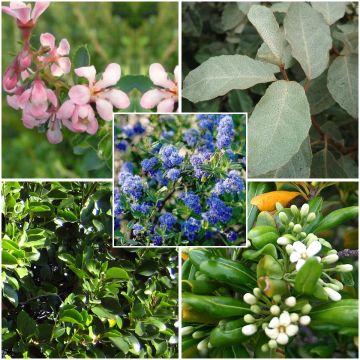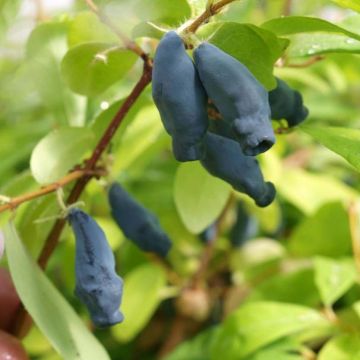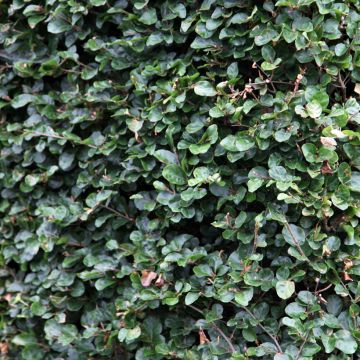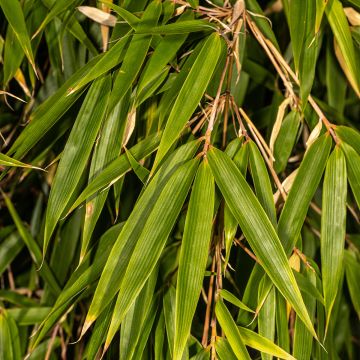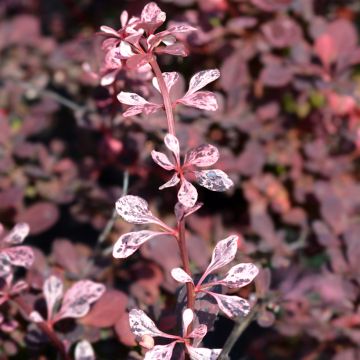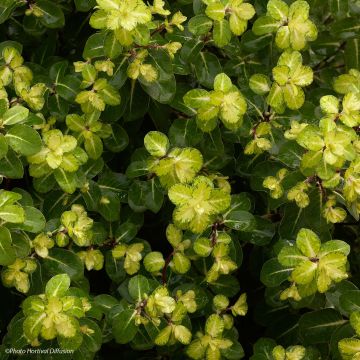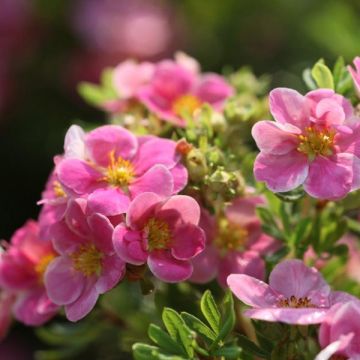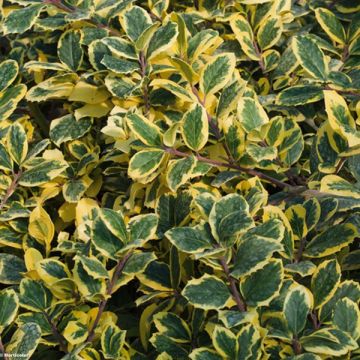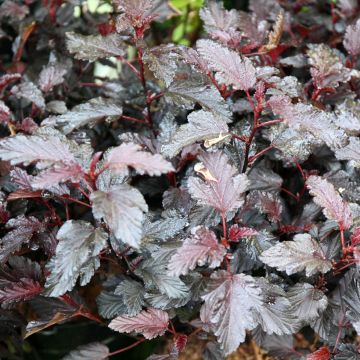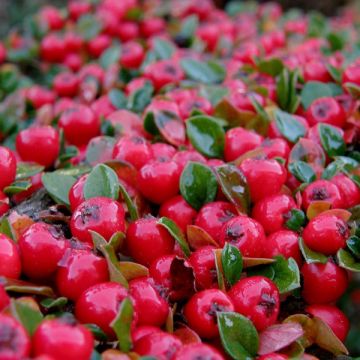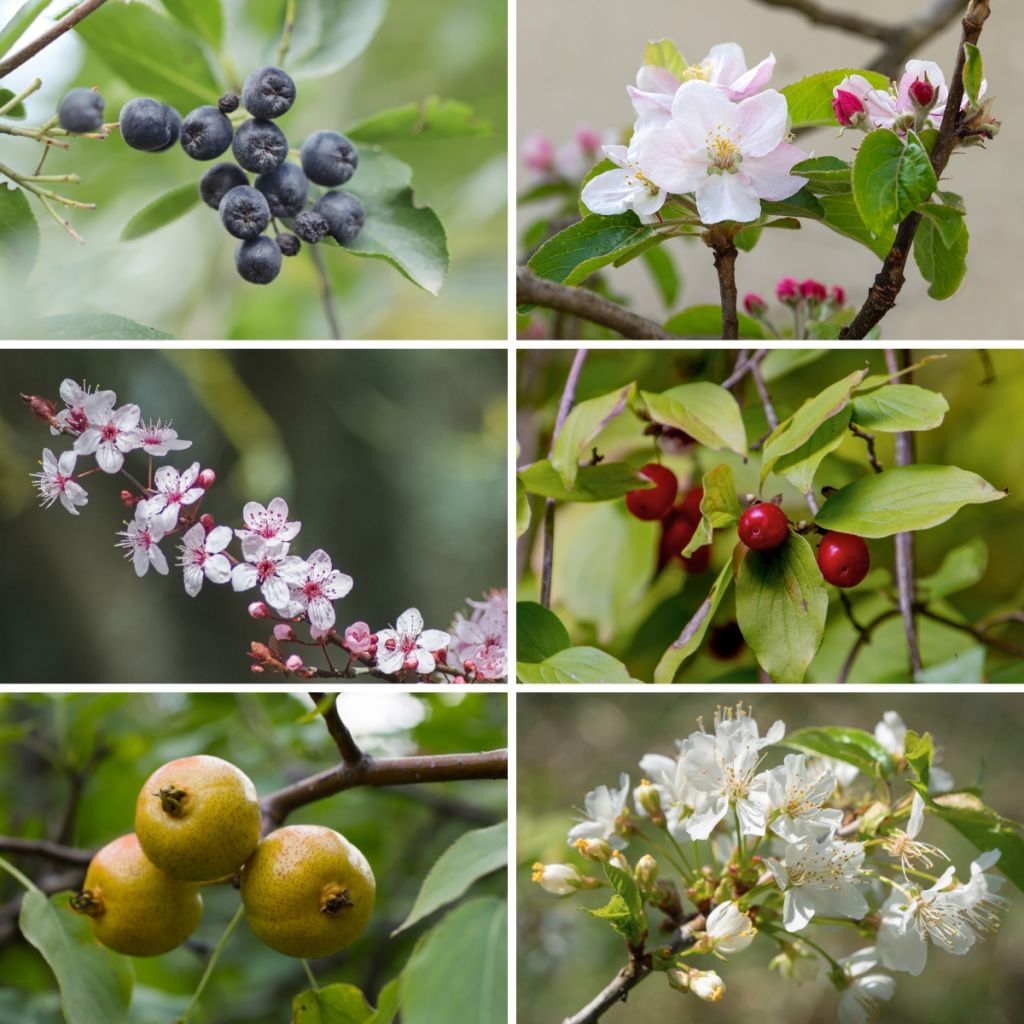

Wild Fruit Hedge Eco Kit
Wild Fruit Hedge Eco Kit
This plant carries a 24 months recovery warranty
More information
We guarantee the quality of our plants for a full growing cycle, and will replace at our expense any plant that fails to recover under normal climatic and planting conditions.
From €5.90 for pickup delivery and €6.90 for home delivery
Express home delivery from €8.90.
Does this plant fit my garden?
Set up your Plantfit profile →
Collection items (6 plants)
Description
This Wild Fruit Hedge Eco Kit will create a hardy, living, and nourishing hedge without breaking the bank. Comprising 6 bare-root shrubs and trees, this kit is ideally planted in autumn for better growth in spring. An interesting option to promote local wildlife by attracting birds and pollinators while adding a pleasant ornamental touch to the garden. One will create a hedge 5 to 7 metres long depending on the planting density.
The kit includes:
1 x Flowering Cherry Plum - Prunus cerasifera: This ornamental tree reaches 4 to 5 m in height, offering abundant white flowering in March-April. Its small red fruits are appreciated by birds in late summer.
1 x Wild Pear - Pyrus pyraster: a vigorous tree of 8 to 10 m, with white flowering in spring and decorative small green to yellow-brown fruits in autumn, highly valued by wildlife.
1 x Bird Cherry - Prunus avium: this majestic tree of 12-15 m high displays white flowers in spring and edible but bitter red cherries that birds love in summer.
1 x Cornelian Cherry - Cornus mas: a bush 3 to 5 m high, adorned with yellow flowers from February, followed by edible red fruits in autumn.
1 x Wild Apple - Malus sylvestris: reaching 8 to 10 m in height, this tree blooms in pinkish white in spring. It produces small sour green apples in late summer, for jam or to feed wildlife.
1 x Black Chokeberry - Aronia melanocarpa: a bush 1.5 to 3 m high, with beautiful white flowers in May followed by black berries rich in antioxidants in late summer. It is very decorative in autumn with its purple foliage.
Preferably plant these bushes in autumn or early winter, in full sun or partial shade, mixing them and spacing them about 1 metre apart. They thrive in well-prepared garden soil, enriched with leaf compost to help them establish. Once well established, they generally do not need watering in summer. Due to its height, this hedge should not be planted between two properties (a boundary hedge must not exceed 2 m in height). Plant it at the countryside boundary.
Tip: only prune minimally to fully enjoy the flowering and fruits that will feed the garden birds in winter. Intervene only occasionally, to limit tree overcrowding or remove dead wood.
Plant habit
Flowering
Foliage
Botanical data
Cultivar or hybrid
Other Hedge-growing kits A to Z
Planting and care
Plant this kit in full sun or partial shade, in a well-prepared, ordinary soil, enriched with leaf compost, moist but well-drained. Dig planting holes of 30-40 cm in all directions, loosening the bottom and walls well with a fork or pickaxe. Maintain a planting distance of about 1 m between each bush. These easy-to-grow, undemanding, bushes only need mulching in summer in dry climates to maintain some moisture, at least during the first summers following planting. Water them abundantly in the first years in case of pronounced drought (15-20 litres of water each time) but spaced out. Avoid pruning that compromises flowering and fruiting, unless a bush becomes too large. Remove dead wood in spring.
Planting period
Intended location
Care
This item has not been reviewed yet - be the first to leave a review about it.
Hedge shrubs
Haven't found what you were looking for?
Hardiness is the lowest winter temperature a plant can endure without suffering serious damage or even dying. However, hardiness is affected by location (a sheltered area, such as a patio), protection (winter cover) and soil type (hardiness is improved by well-drained soil).

Photo Sharing Terms & Conditions
In order to encourage gardeners to interact and share their experiences, Promesse de fleurs offers various media enabling content to be uploaded onto its Site - in particular via the ‘Photo sharing’ module.
The User agrees to refrain from:
- Posting any content that is illegal, prejudicial, insulting, racist, inciteful to hatred, revisionist, contrary to public decency, that infringes on privacy or on the privacy rights of third parties, in particular the publicity rights of persons and goods, intellectual property rights, or the right to privacy.
- Submitting content on behalf of a third party;
- Impersonate the identity of a third party and/or publish any personal information about a third party;
In general, the User undertakes to refrain from any unethical behaviour.
All Content (in particular text, comments, files, images, photos, videos, creative works, etc.), which may be subject to property or intellectual property rights, image or other private rights, shall remain the property of the User, subject to the limited rights granted by the terms of the licence granted by Promesse de fleurs as stated below. Users are at liberty to publish or not to publish such Content on the Site, notably via the ‘Photo Sharing’ facility, and accept that this Content shall be made public and freely accessible, notably on the Internet.
Users further acknowledge, undertake to have ,and guarantee that they hold all necessary rights and permissions to publish such material on the Site, in particular with regard to the legislation in force pertaining to any privacy, property, intellectual property, image, or contractual rights, or rights of any other nature. By publishing such Content on the Site, Users acknowledge accepting full liability as publishers of the Content within the meaning of the law, and grant Promesse de fleurs, free of charge, an inclusive, worldwide licence for the said Content for the entire duration of its publication, including all reproduction, representation, up/downloading, displaying, performing, transmission, and storage rights.
Users also grant permission for their name to be linked to the Content and accept that this link may not always be made available.
By engaging in posting material, Users consent to their Content becoming automatically accessible on the Internet, in particular on other sites and/or blogs and/or web pages of the Promesse de fleurs site, including in particular social pages and the Promesse de fleurs catalogue.
Users may secure the removal of entrusted content free of charge by issuing a simple request via our contact form.

































